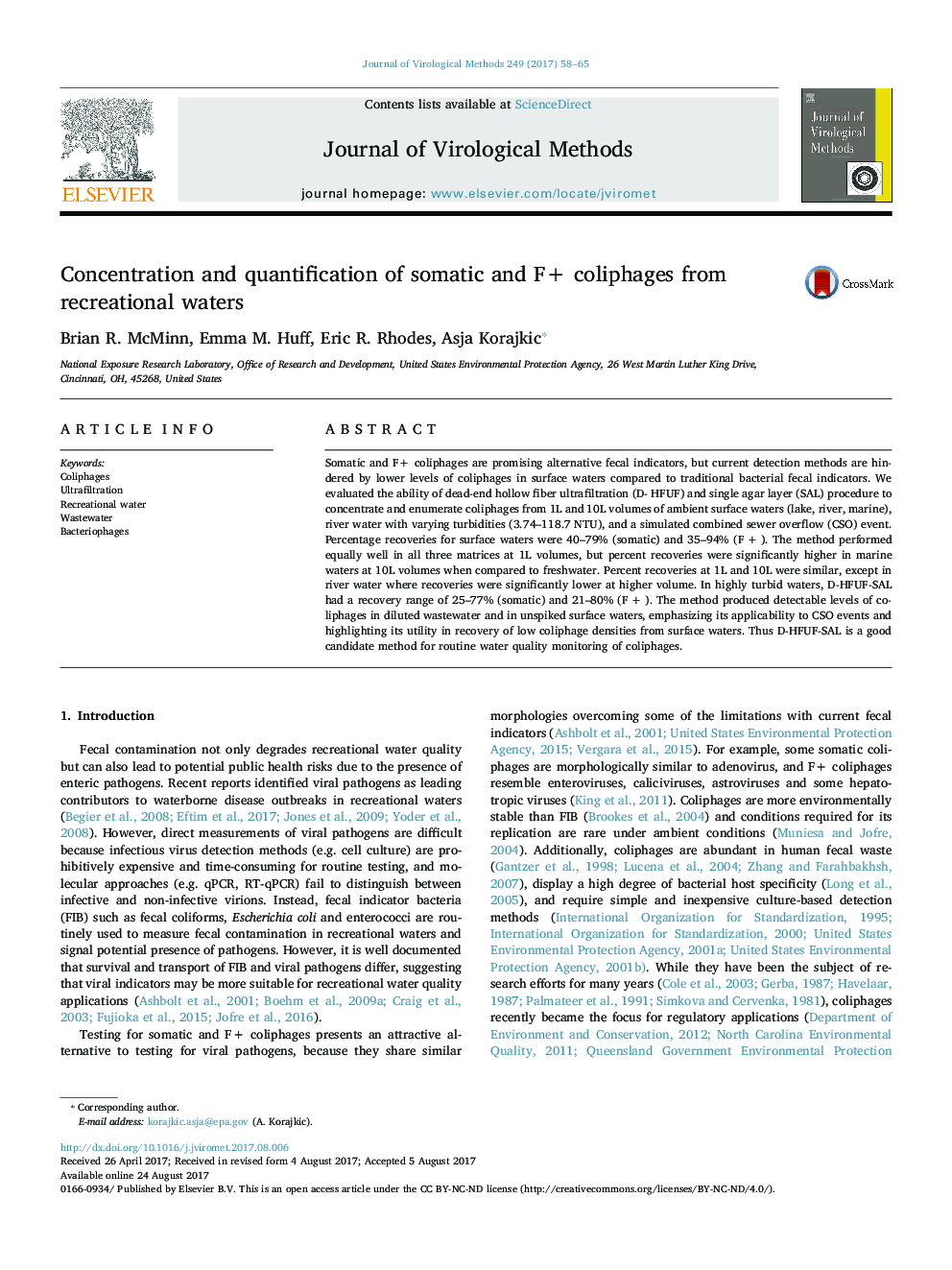| کد مقاله | کد نشریه | سال انتشار | مقاله انگلیسی | نسخه تمام متن |
|---|---|---|---|---|
| 5672984 | 1593428 | 2017 | 8 صفحه PDF | دانلود رایگان |

- Ultrafiltration and single agar layer method was developed for coliphage concentration.
- Method effectively concentrated somatic and F+ coliphages from diverse surface waters.
- Percent recoveries were 40-79% for river, 45-63% for lake and 70-94% for marine water.
- Both coliphages were consistently and reliably detected in highly diluted wastewater.
- Autochthonous coliphages were detected in 76% (somatic) and 57% (FÂ +Â ) of samples.
Somatic and F+ coliphages are promising alternative fecal indicators, but current detection methods are hindered by lower levels of coliphages in surface waters compared to traditional bacterial fecal indicators. We evaluated the ability of dead-end hollow fiber ultrafiltration (D- HFUF) and single agar layer (SAL) procedure to concentrate and enumerate coliphages from 1L and 10L volumes of ambient surface waters (lake, river, marine), river water with varying turbidities (3.74-118.7 NTU), and a simulated combined sewer overflow (CSO) event. Percentage recoveries for surface waters were 40-79% (somatic) and 35-94% (FÂ +Â ). The method performed equally well in all three matrices at 1L volumes, but percent recoveries were significantly higher in marine waters at 10L volumes when compared to freshwater. Percent recoveries at 1L and 10L were similar, except in river water where recoveries were significantly lower at higher volume. In highly turbid waters, D-HFUF-SAL had a recovery range of 25-77% (somatic) and 21-80% (FÂ +Â ). The method produced detectable levels of coliphages in diluted wastewater and in unspiked surface waters, emphasizing its applicability to CSO events and highlighting its utility in recovery of low coliphage densities from surface waters. Thus D-HFUF-SAL is a good candidate method for routine water quality monitoring of coliphages.
209
Journal: Journal of Virological Methods - Volume 249, November 2017, Pages 58-65